What Is Purchase Intention? Purchase Intention In A Nutshell


Purchase intention is a measure of the strength of a consumer’s intention to perform a specific behavior or make a decision to purchase a product or service. Usually purchase intents are classified according to four types: informational (awareness), investigative intent (consideration), navigational (consideration/conversion), transaction intent (conversion).
Understanding purchase intentionPurchase intention is the willingness of a consumer to buy a product or service.
While the concept appears rather simplistic at first glance, it is important to note that purchase intention cannot be evaluated with a simple yes or no answer. In truth, many factors affect purchase intention such as consumer knowledge, product packaging, celebrity endorsement, or the general perception of a product among friends and relatives.
Purchase intention is the single most important customer metric in eCommerce, but many businesses build customer segments around a buyer persona and consider their work to be finished. In a study conducted by Google in 2015, it was found that marketers who focused on demographics and ignored purchase intention could be missing more than 70% of potential customers.
To illustrate this point, Google noted that 40% of baby-related products were purchased by people who lived in households without the babies they were purchasing for. These are individuals such as grandparents, birthday guests, and baby shower attendees, among others. However, the point here is that none of these individuals are the parents with the newborn baby.
Thus, it stands to reason that to neglect purchase intention is to neglect, in some cases, the majority of the target audience. Marketers who take the time to understand it will enjoy a host of benefits, including improved conversion rates, profit margins, customer lifetime value, brand equity, and marketing channel ROI.
The four types of customer purchase intentionFor online businesses, there are four types of customer purchase intention. In other words, every consumer lands on a website with a different goal in mind.
The four purchase intention types are as follows.
1 – Informational intent (awareness)Consumers in this stage are concerned with reading information to educate themselves on a topic. For example, a consumer searching for information on cosmetics that do not inflame sensitive skin may read an article that helps them understand how to solve their problem.
For the business, the goal is to create brand awareness and provide the consumer with educational resources that move them down the marketing funnel.
2 – Investigative intent (consideration)Consumers in the investigation stage are currently exploring their options via additional research. This may include comparison websites, product and brand reviews, and social listening.
Due to the sheer number of different products available today, consumers spend more time with an investigative intent than they do any other intent. As a result, the business must show the consumer value propositions that are relevant to them and clearly explain what sets their brand apart from competitors.
Consumer finance platform NerdWallet incorporates product comparisons and user reviews to make personalized product recommendations across multiple niche market segments.
3 – Navigational intent (consideration or conversion)Navigational intent means the consumer is visiting a specific website or a brand’s online store. Since they are seeking out a specific brand or website address, navigational intent is associated with higher purchase intent.
Businesses must keep the consumer on their platform at all costs or risk losing them to the competition. Product promotions and personalized messages or customer experiences can be effective strategies.
4 – Transactional intent (conversion)Transactional intent is the type most equate with actual purchase intent. These consumers have a propensity to purchase, which means they are interested in acquiring a product or service.
Conversion should be the aim of the game for all businesses at this stage. This can be facilitated via incentivized, time-limited, or personalized promotions. For example, many eCommerce retailers offer consumers a 10% discount in exchange for their email addresses. Others may promise free shipping if the order amount exceeds a certain threshold.
Key takeaways:Purchase intention is a measure of the strength of a consumer’s intention to perform a specific behavior or make a decision to purchase a product or service.Studies by Google have shown that focusing on customer demographics and ignoring purchase intention is to neglect, in some cases, the majority of a company’s target audience.There are four types of purchase intention which correlate with various stages of a marketing funnel. For eCommerce businesses, knowing which type of intent a website visitor displays is crucial in making them more motivated to buy.Main Free Guides:
Business ModelsBusiness CompetitionBusiness StrategyBusiness DevelopmentDigital Business ModelsDistribution ChannelsMarketing StrategyPlatform Business ModelsRevenue ModelsTech Business ModelsBlockchain Business Models FrameworkConnected Business Concepts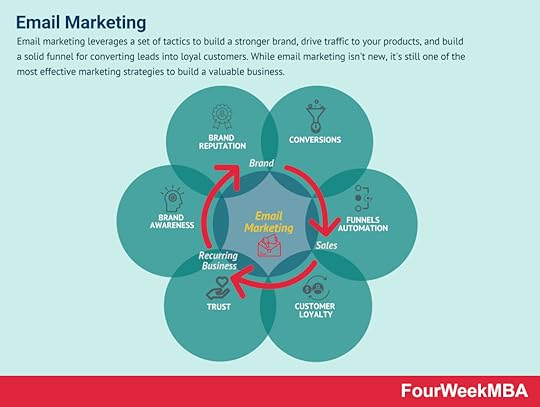 Email marketing leverages a set of tactics to build a stronger brand, drive traffic to your products, and build a solid funnel for converting leads into loyal customers. While email marketing isn’t new, it’s still one of the most effective marketing strategies to build a valuable business.
Email marketing leverages a set of tactics to build a stronger brand, drive traffic to your products, and build a solid funnel for converting leads into loyal customers. While email marketing isn’t new, it’s still one of the most effective marketing strategies to build a valuable business.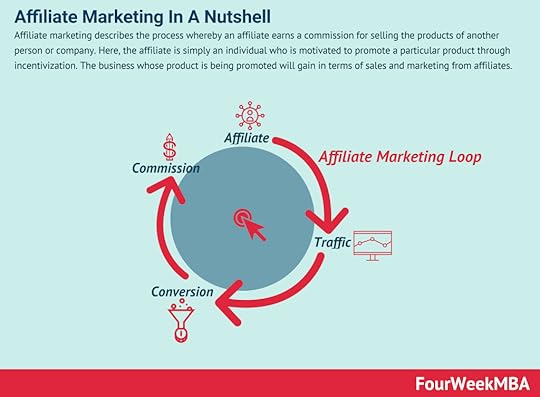 Affiliate marketing describes the process whereby an affiliate earns a commission for selling the products of another person or company. Here, the affiliate is simply an individual who is motivated to promote a particular product through incentivization. The business whose product is being promoted will gain in terms of sales and marketing from affiliates.
Affiliate marketing describes the process whereby an affiliate earns a commission for selling the products of another person or company. Here, the affiliate is simply an individual who is motivated to promote a particular product through incentivization. The business whose product is being promoted will gain in terms of sales and marketing from affiliates.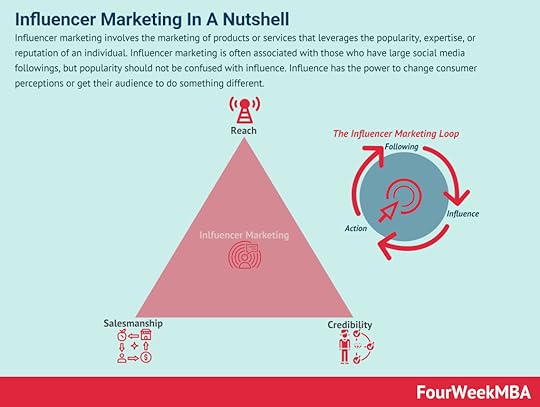 Influencer marketing involves the marketing of products or services that leverages the popularity, expertise, or reputation of an individual. Influencer marketing is often associated with those who have large social media followings, but popularity should not be confused with influence. Influence has the power to change consumer perceptions or get their audience to do something different.
Influencer marketing involves the marketing of products or services that leverages the popularity, expertise, or reputation of an individual. Influencer marketing is often associated with those who have large social media followings, but popularity should not be confused with influence. Influence has the power to change consumer perceptions or get their audience to do something different.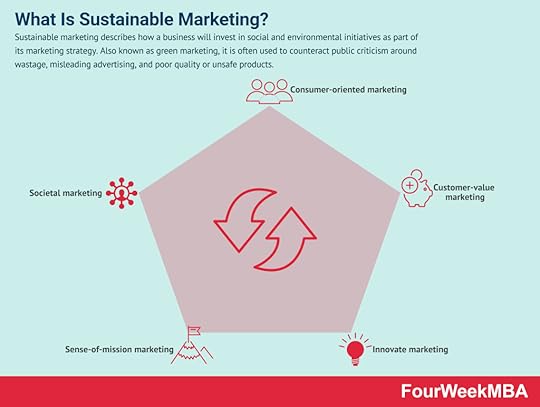 Sustainable marketing describes how a business will invest in social and environmental initiatives as part of its marketing strategy. Also known as green marketing, it is often used to counteract public criticism around wastage, misleading advertising, and poor quality or unsafe products.
Sustainable marketing describes how a business will invest in social and environmental initiatives as part of its marketing strategy. Also known as green marketing, it is often used to counteract public criticism around wastage, misleading advertising, and poor quality or unsafe products.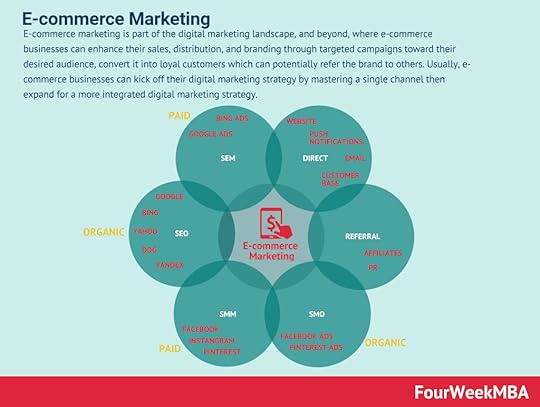 E-commerce marketing is part of the digital marketing landscape, and beyond, where e-commerce businesses can enhance their sales, distribution, and branding through targeted campaigns toward their desired audience, convert it into loyal customers which can potentially refer the brand to others. Usually, e-commerce businesses can kick off their digital marketing strategy by mastering a single channel then expand for a more integrated digital marketing strategy.
E-commerce marketing is part of the digital marketing landscape, and beyond, where e-commerce businesses can enhance their sales, distribution, and branding through targeted campaigns toward their desired audience, convert it into loyal customers which can potentially refer the brand to others. Usually, e-commerce businesses can kick off their digital marketing strategy by mastering a single channel then expand for a more integrated digital marketing strategy.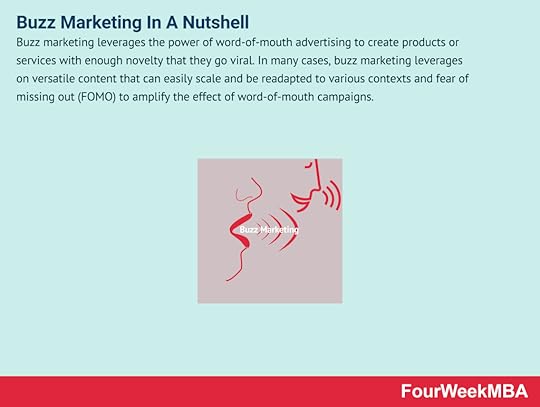 Buzz marketing leverages the power of word-of-mouth advertising to create products or services with enough novelty that they go viral. In many cases, buzz marketing leverages on versatile content that can easily scale and be readapted to various contexts and fear of missing out (FOMO) to amplify the effect of word-of-mouth campaigns.
Buzz marketing leverages the power of word-of-mouth advertising to create products or services with enough novelty that they go viral. In many cases, buzz marketing leverages on versatile content that can easily scale and be readapted to various contexts and fear of missing out (FOMO) to amplify the effect of word-of-mouth campaigns.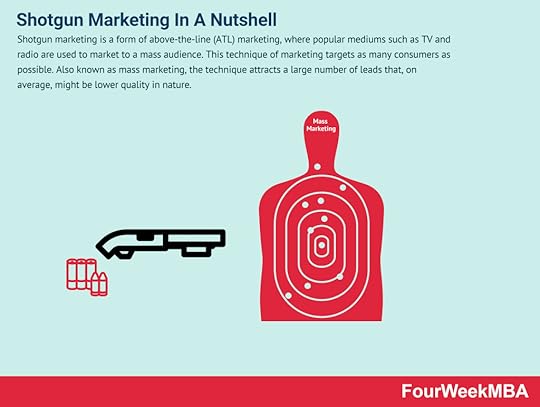 Shotgun marketing is a form of above-the-line (ATL) marketing, where popular mediums such as TV and radio are used to market to a mass audience. This technique of marketing targets as many consumers as possible. Also known as mass marketing, the technique attracts a large number of leads that, on average, might be of lower quality in nature.
Shotgun marketing is a form of above-the-line (ATL) marketing, where popular mediums such as TV and radio are used to market to a mass audience. This technique of marketing targets as many consumers as possible. Also known as mass marketing, the technique attracts a large number of leads that, on average, might be of lower quality in nature.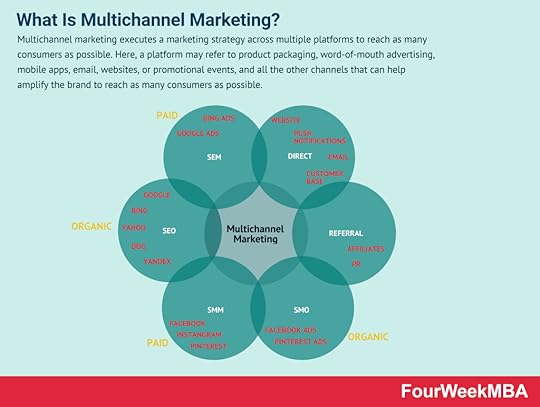 Multichannel marketing executes a marketing strategy across multiple platforms to reach as many consumers as possible. Here, a platform may refer to product packaging, word-of-mouth advertising, mobile apps, email, websites, or promotional events, and all the other channels that can help amplify the brand to reach as many consumers as possible.
Multichannel marketing executes a marketing strategy across multiple platforms to reach as many consumers as possible. Here, a platform may refer to product packaging, word-of-mouth advertising, mobile apps, email, websites, or promotional events, and all the other channels that can help amplify the brand to reach as many consumers as possible.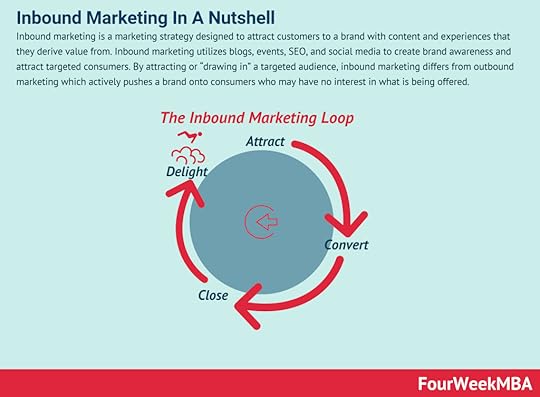 Inbound marketing is a marketing strategy designed to attract customers to a brand with content and experiences that they derive value from. Inbound marketing utilizes blogs, events, SEO, and social media to create brand awareness and attract targeted consumers. By attracting or “drawing in” a targeted audience, inbound marketing differs from outbound marketing which actively pushes a brand onto consumers who may have no interest in what is being offered.
Inbound marketing is a marketing strategy designed to attract customers to a brand with content and experiences that they derive value from. Inbound marketing utilizes blogs, events, SEO, and social media to create brand awareness and attract targeted consumers. By attracting or “drawing in” a targeted audience, inbound marketing differs from outbound marketing which actively pushes a brand onto consumers who may have no interest in what is being offered. With partnership marketing, two or more companies team up to create marketing campaigns that help them grow organically with a mutual agreement, thus making it possible to reach shared business goals. Partnership marketing leverages time and resources of partners that help them expand their market.
With partnership marketing, two or more companies team up to create marketing campaigns that help them grow organically with a mutual agreement, thus making it possible to reach shared business goals. Partnership marketing leverages time and resources of partners that help them expand their market.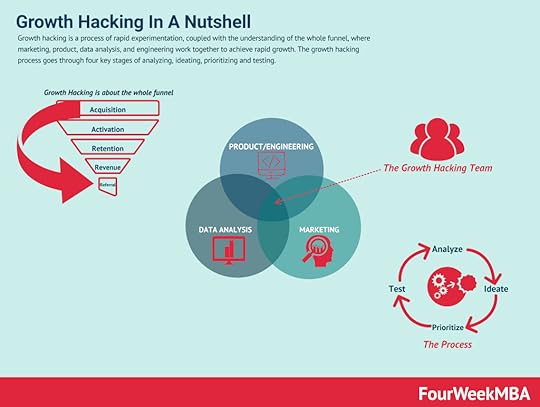 Growth marketing is a process of rapid experimentation, which in a way has to be “scientific” by keeping in mind that it is used by startups to grow, quickly. Thus, the “scientific” here is not meant in the academic sense. Growth marketing is expected to unlock growth, quickly and with an often limited budget.
Growth marketing is a process of rapid experimentation, which in a way has to be “scientific” by keeping in mind that it is used by startups to grow, quickly. Thus, the “scientific” here is not meant in the academic sense. Growth marketing is expected to unlock growth, quickly and with an often limited budget.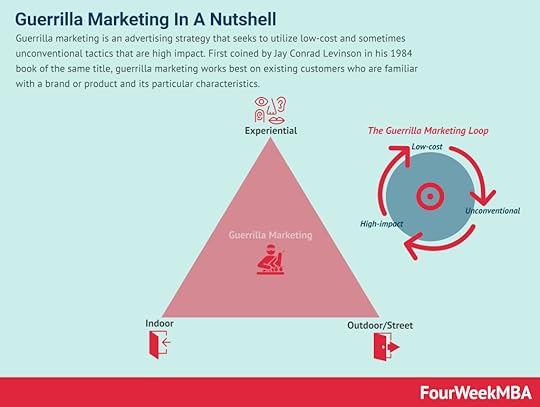 Guerrilla marketing is an advertising strategy that seeks to utilize low-cost and sometimes unconventional tactics that are high impact. First coined by Jay Conrad Levinson in his 1984 book of the same title, guerrilla marketing works best on existing customers who are familiar with a brand or product and its particular characteristics.
Guerrilla marketing is an advertising strategy that seeks to utilize low-cost and sometimes unconventional tactics that are high impact. First coined by Jay Conrad Levinson in his 1984 book of the same title, guerrilla marketing works best on existing customers who are familiar with a brand or product and its particular characteristics.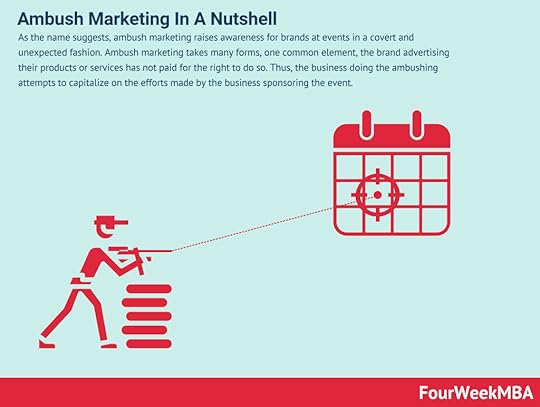 As the name suggests, ambush marketing raises awareness for brands at events in a covert and unexpected fashion. Ambush marketing takes many forms, one common element, the brand advertising their products or services has not paid for the right to do so. Thus, the business doing the ambushing attempts to capitalize on the efforts made by the business sponsoring the event.
As the name suggests, ambush marketing raises awareness for brands at events in a covert and unexpected fashion. Ambush marketing takes many forms, one common element, the brand advertising their products or services has not paid for the right to do so. Thus, the business doing the ambushing attempts to capitalize on the efforts made by the business sponsoring the event. Relationship marketing involves businesses and their brands forming long-term relationships with customers. The focus of relationship marketing is to increase customer loyalty and engagement through high-quality products and services. It differs from short-term processes focused solely on customer acquisition and individual sales.
Relationship marketing involves businesses and their brands forming long-term relationships with customers. The focus of relationship marketing is to increase customer loyalty and engagement through high-quality products and services. It differs from short-term processes focused solely on customer acquisition and individual sales.The post What Is Purchase Intention? Purchase Intention In A Nutshell appeared first on FourWeekMBA.



